When you think of the Republic of Korea, it is almost guaranteed that Seoul will be one of the places that first comes to mind. With a population of around 9.7 million people (almost a fifth of the entire country’s population) occupying just about 234 square miles(606 square kilometers), Seoul is packed to the brim with historical artifacts and sights, mega-companies like Samsung and Hyundai, some of the most prestigious universities in the country, and of course all types of trendy cafes, shops, and restaurants that will surely catch your eye. Seoul is a cultural and historical hotspot, and is often the first stop, maybe even the only stop, on a tourist’s itinerary.
However, when a tourist comes to Seoul, one of the things that immediately grabs one’s attention is the towering mountains that surround the bustling city on every side. These visitors marvel over how the steel jungle should not blend so harmoniously with the lush green of the mountains, yet somehow does seamlessly. Standing atop Seoul’s Lotte Tower at a height of 1820 feet (555m), they gawk at the city sprawled before them, appearing impossibly small as it sits below the looming mountains, some of their peeks 1.5 times the height of Lotte Tower.
In short, there are a lot of mountains on the Korean Peninsula. In fact, around 70% of the Republic of Korea’s territory is composed of mountains. While there are certainly more mountainous countries around the world, such as Nepal or Chile, the blend of a modern, almost futuristic, cityscape and nature is something that cannot be found so easily. There are an astounding 7,715 named mountains throughout the country, and while it would be impossible to go through all of them, it is worthwhile to get to know some of the most famous.
Mountains in Seoul
When we think of mountains, it is more than natural to think of these natural landscapes being located in, well, nature. A mountain located between the towering skyscrapers of metropolitan Seoul might sound a bit outlandish to anyone who has never actually visited the region, but rest assured, Seoul also has its fair share of mountains for tourists to traverse.
Namsan (남산)
Namsan is probably one of the most famous mountains in the Seoul region and can most likely be found on at least 90% of travel itineraries for people visiting the capital. While it does not boast the most towering height, its appeal is strengthened by its easily accessible location, almost placed right at the heart of Seoul in between Jung-gu (중구) and Yongsan-gu (용산구). Standing only at 860 feet tall, visitors can choose to either make the trek to the peak by foot or ride the conveniently installed cable car. At the top, they will be greeted by the sight of N Seoul Tower, as well as a breathtaking view of the Seoul cityscape.
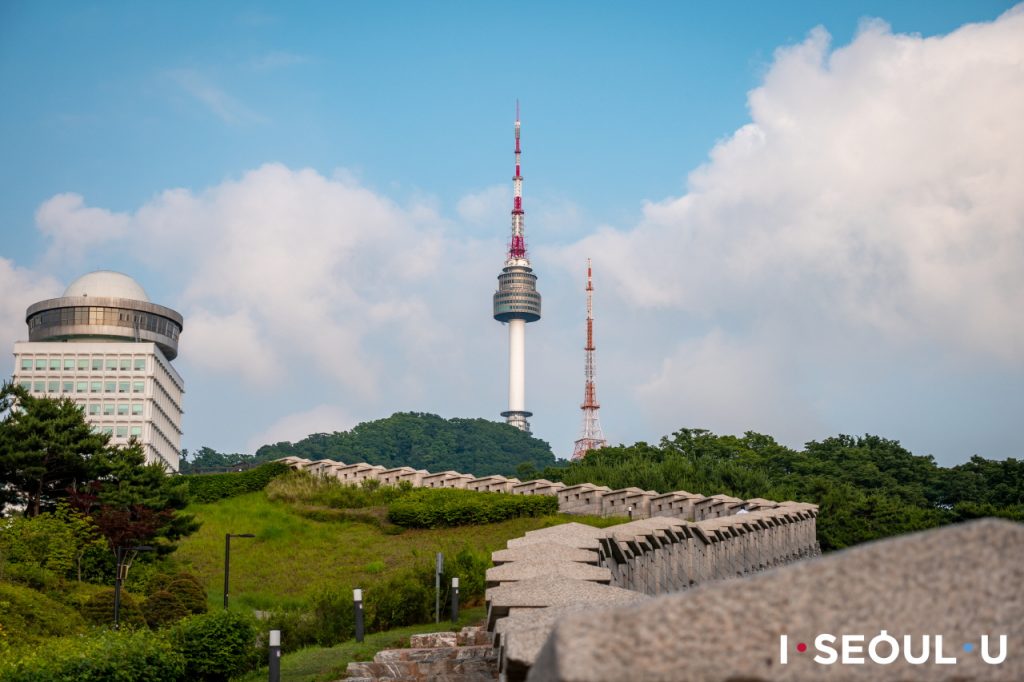
A view of Namsan Tower
The top of Namsan is also a popular destination for couples, who can purchase a padlock at one of the mountaintop kiosks. On the padlock they can write a message and then go secure it on one of the many guardrails surrounding the observation deck. These “love locks” can be seen by the thousands, not only meant for couples, but for anyone who wishes to write a message to a loved one.
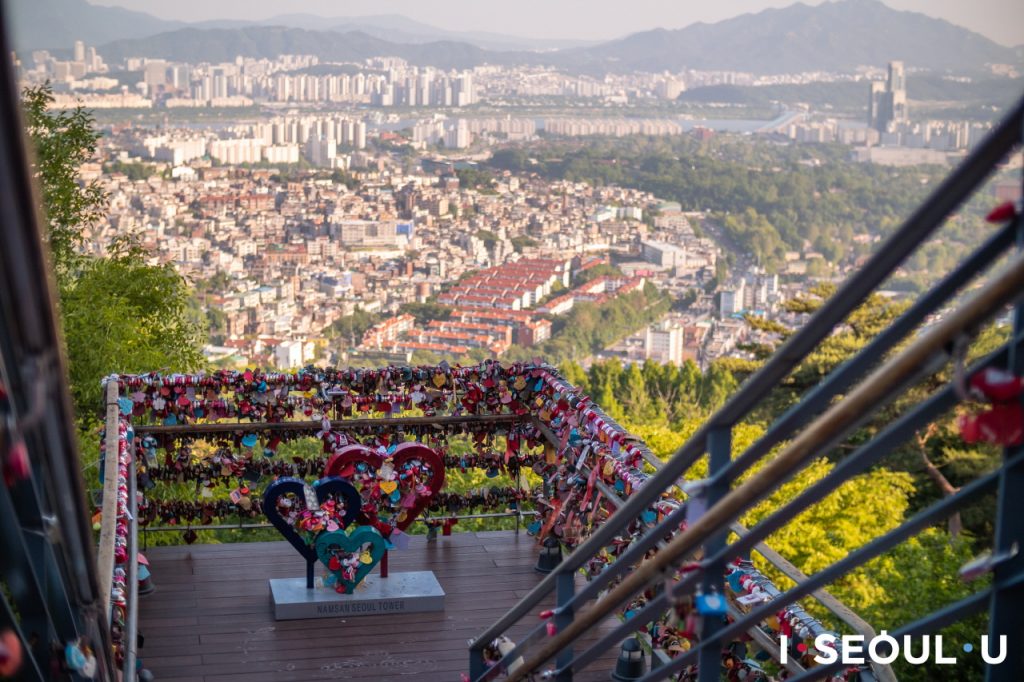
numerous padlocks on guardrails of observation deck
Bukhansan (북한산)
Bukhansan is located along the northern periphery of the city and, while it does not boast the convenience of Namsan’s central location, its height and vastness of size makes it visible from almost any point in Seoul. During the Joseon Dynasty, Bukhansan marked the northernmost boundary of Seoul.
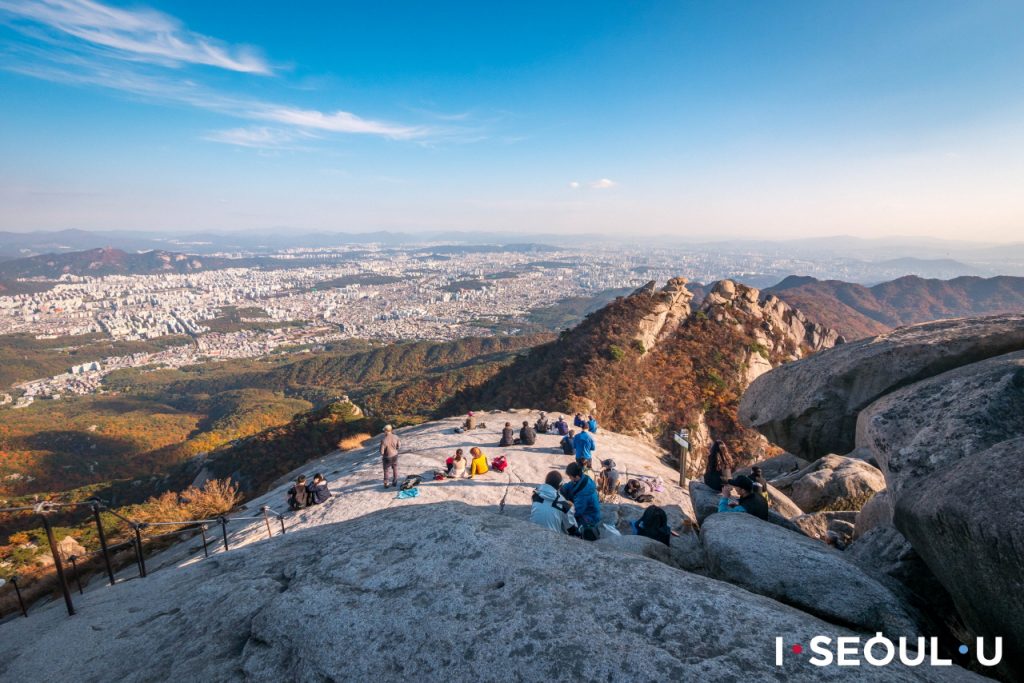
A panoramic view from one of the peaks of Bukhansan
Originally, the mountain was called Samgaksan (삼각산), which can be translated to “three-horned mountain, in reference to its three major peaks. Since 2002, there has been a movement to revert the mountain’s name back to Samgaksan.
Bukhansan is famously known for its stunning autumn views, the changing leaves creating a picturesque backdrop for anyone who is daring enough to make the trek.
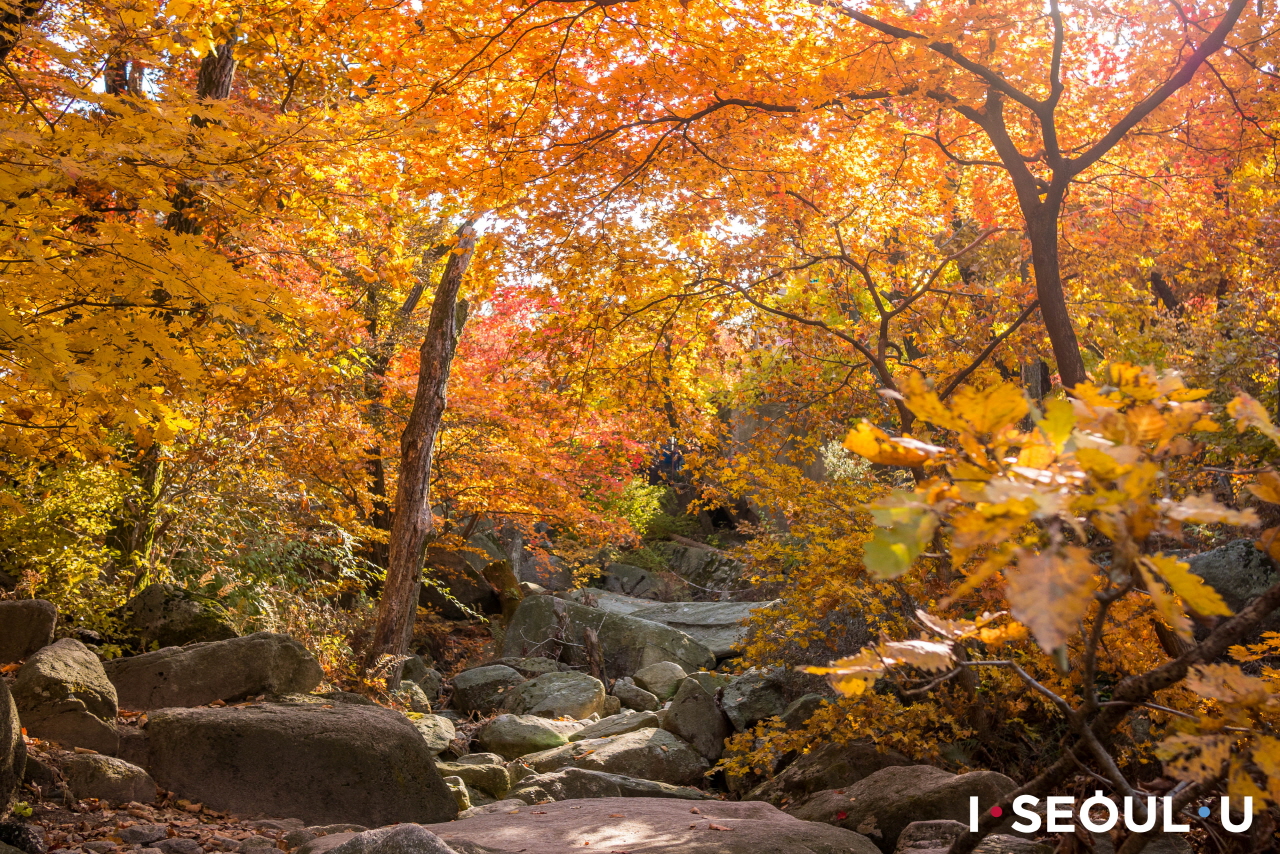
Colorful Autumn in Bukhansan
The Three Main Mountains of Korea; Hallasan, Jirisan, Seoraksan
Hallasan (한라산)
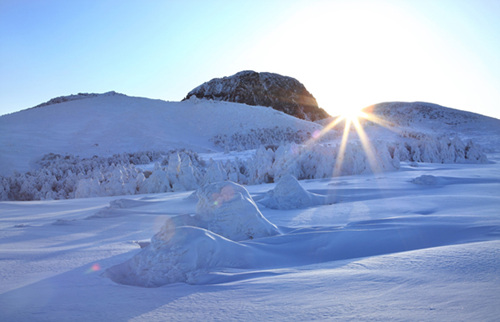
Snowy hills of Hallasan
Hallasan is the tallest mountain in the Republic of Korea, located southwest of the peninsula on Jeju Island and standing at a towering 6,388 feet(1,947m) tall. It is classified as a volcanic shield and makes up a sizable part of the entire island, often seen as a representation of the island as a whole. The surrounding area has been preserved as a national park and the mountain itself is the Republic of Korea’s National Monument (천연기념물) no. 182. Hallasan is technically classified as an active volcano, however its last eruption happened around 5,000 years ago, leading to some dispute over the validity of this classification.
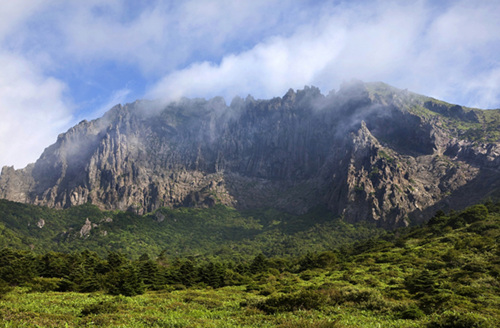
Vertical distribution of plants of Hallasan
Due to its high elevation, Hallasan is home to all kinds of plants and animals that thrive in both warm and cold temperatures, with both subarctic and tropical animals able to coexist on the island.
Hallasan is also home to Gwaneumsa (관음사), which is the oldest Buddhist temple on the island and a popular spot for tourists and hikers to stop. The temple was built during the rule of Munjong of Goryeo Dynasty (1046-1083), but was destroyed in 1702 and closed for 200 years. It was rebuilt in 1908 and has also seen the addition of a memorial site to commemorate the Jeju uprising that took place from 1948 to 1950.
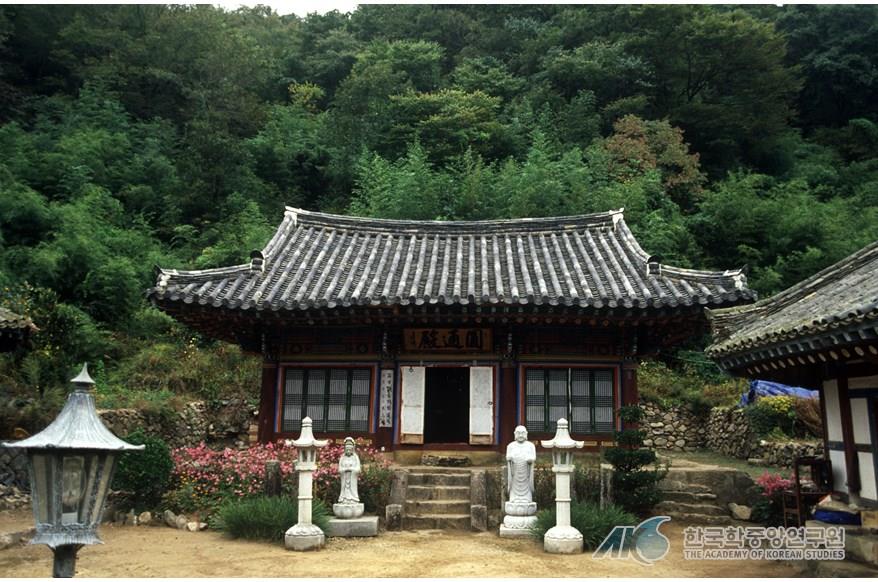
A view of Gwaneumsa
Jirisan (지리산)
Jirisan is the second tallest mountain after Hallasan and is the tallest mountain on the Republic of Korea’s mainland. The mountain is located in the country’s southern region and spans over three provinces; North Jeolla (전라북도), South Jeolla (전라남도) and South Gyeongsang (경상남도). Similar to Hallasan, Jirisan stands at a towering 6,283 feet (1917m).

panoramic view of Jirisan
Jirisan’s most popular hiking trail starts from Ssanggye Temple (쌍계사) and is just around a 6 mile hike to Samshinbong (삼신봉), a 4,213 foot (1289m) high peak. If one walks at a steady pace, they can reach the peak in just around 4 hours…
The mountain has also been the main backdrop for various dramas and movies. The film Piagol (피아골) centers around the story of a North Korean army unit who refused to accept the armistice with the Republic of Korea in 1953, choosing instead to remain in the surrounding regions of Jirisan. This film was based on real historical events, chronicling the guerilla warfare that ensued in the region until 1955, two years after the Korean Armistice Agreement.
The mountain has also become the main focus of a recently aired drama of the same name, revolving around the stories of rangers and workers at the Jirisan National Park as they venture into the unexplored regions of Jirisan looking for survivors and lost trekkers. Breaking away from the historical genre, Jirisan is a rather dark mystery/thriller drama, and has gone on to capture many people’s interest.
Seoraksan (설악산)
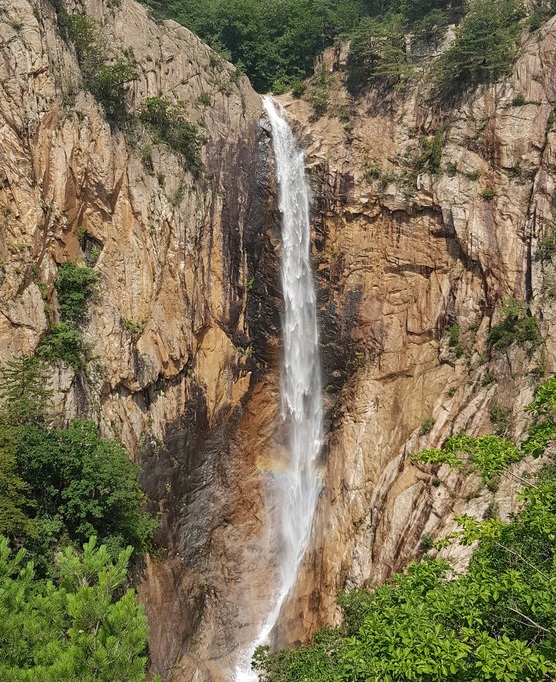
Daeseung Falls of Seoraksan
Seoraksan is the highest mountain in the Taebaek mountain range (태백산맥), located in the eastern region of Gangwon Province (강원도). Claiming the title of the third highest mountain in the country, its highest peak, Daecheongbong (대청봉), reaches a height of 5,603 feet (1708m). The mountain is divided into two regions; Inner Seorak (내설악) and Outer Seorak (외설악).
Inner Seorak belongs to Inje County (인제군) and is where visitors can see many breathtaking valley views, including Baekdam Valley (백담계곡), as well as waterfalls such as Daeseung Falls (대승폭포).
Outer Seorak is where visitors can access many of the easier hiking trails, and is a region belonging to Sokcho City (속초시). It is one of the most accessed areas of the park.
Seoraksan’s climate can best be described as an inland climate, the mountain’s geography characterized by gentle slopes and thick soil that boasts rich forests that act as homes for a large diversity of flora and fauna.
One of Seoraksan’s primary tourist attractions is Ulsanbawi, or Ulsan Rock (울산바위). It reaches a height of around 2,000 feet, somewhat resembling a folding screen with six peaks. The legend surrounding this rock is as follows:
Ulsanbawi came from the city of Ulsan in the southern region of the peninsula, travelling as a representative for Ulsan as the mountain of Geumgangsan (금강산) was being formed by the mountain god. Unfortunately, by the time Ulsanbawi arrived, there was no room left in Geumgangsan, and it was forced to turn around in shame and return to the south. One night, Ulsanbawi went to sleep in the Seorak region, deciding to stay for good after seeing just how beautiful the region was.
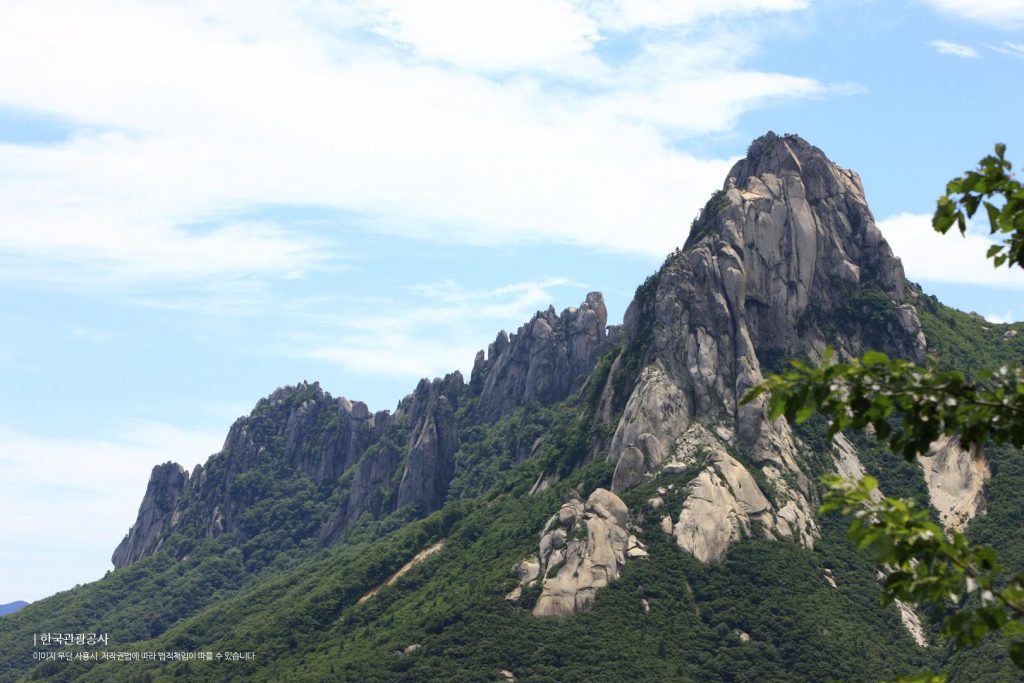
Ulsanbawi
While the bustling cities of the country offer a plethora of activities and sights to keep you occupied for days, weeks, and months, the beauty and strength of nature should not be forgotten.
If you ever get a chance to visit Seoul or any other part of the Republic of Korea, take just one day to go explore one of the country’s many, many mountains. I can guarantee you will not be disappointed.
Written by : Allison Garbacz
From Illinois, United States. Current 5th-year undergraduate at the University of Wisconsin-Madison, B.A. Candidate for Linguistics, B.A. Candidate for Asian Languages and Cultural Studies, Exchange student at Korea University, Intern at VANK (Voluntary Agency Network of Korea)